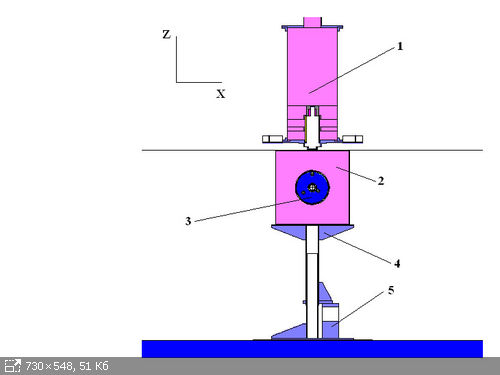Speaker
Description
A description of a micromodel of a salt blanket for conducting benchmark experiments with the melting of salt fluorides (0.52 NaF+0.48ZrF4) is given. The experiments are intended for verification of nuclear data libraries and codes applied to justify the nuclear and radiation safety of full-scale subcritical blankets of thermonuclear installations based on liquid-salt technologies,
Three dry experimental ducts are in the salt blanket micromodel. Canisters with experimental samples (natNi, natZr, natCd, natTi, 59Co, 63Cu, 65Cu, 64Zn, natIn, 27Al, natMg, natFe, 169Tm, 197Au, 232Th) are placed in the ducts. A neutron generator NG24M with a neutron yield of ~ 10 raized to the power of 11 n/s is used as a source of neutrons with an energy of 14 MeV.
The results of the initial stage of experimental research are presented (Fig .1). These results are compared with the calculated data obtained using the MCNP4 code with the ENDF/BVII.0 and FENDL-3 libraries as well as MCNP6.1 code with the ENDF / BVII.0 library.
The drawing of the micromodel is shown in Fig. 2 and 3. The micromodel is represented by the following main elements:
Neutron generator with an energy of 14 MeV – 1;
Aluminum-based tank with retarder (water, heavy water) – 2;
Liquid salt blanket – 3;
Steel support for the distillate tank – 4;
Jack – 5;
Mechanism for rotating the blanket – 6.
The composition of the materials in the model:
tank material (mass.%): Mg-24 – 0.7; Al-27 – 98,3; Si-28 – 1;
blank material (mass.% ) E-110 (Zr – 99, Nb – 1);
the composition of salts (wt.%): 0.522 NaF+0. 478ZrF4.
The micromodel was created for Monte Carlo calculations using the MCNP-4 code and reproduces the real geometry of the expert with the highest possible accuracy.
The work is carried out under the RFBR project 19-29-02028 " Benchmark experiments for verification of nuclear libraries used for calculating full-scale subcritical blanks with FNS (Fusion neutron source)" and is a continuation of the work under the RFBR project 14-08-90042 "Modeling of subcritical blanks of a fusion neutron source for benchmark experiments in justification and licensing of a full-scale project" [1-3].
References
- Yu. E. Titarenko, V. F. Batyaev, K. V. Pavlov, A. Yu. Titarenko, P. N. Alekseev, M. I. Gurevich, A. A. Dudnikov, A. V. Zirkin, B. V. Kuteev, A. B. Koldobsky, A. I. Kievitskaya, and Yu. G. Fokov. Benchmark experiments for verification of calculational parameters of fusion neutron source blankets. ATOMIC ENERGY (Moscow), Vol: 120, is-sue 1, 2016, pp. 43-48.
- A.V. Zhirkin, B. V. Kuteev, M. I. Gurevich, B. K. Chukbar. Neutronics Analysis of Blankets for the Hybrid Fusion Neutron Source. NUCLEAR FUSION, Volume 55, Issue 11, September 2015, p. p. 1-10.
- A.V. Zhirkin, P. N. Alekseev, V. F. Batyaev, M. I. Gurevich, A. A. Dudnikov , B. V. Kuteev, K. V. Pavlov, Yu.E. Titarenko, A. Yu. Titarenko. Fusion neutron source blanket: requirements for benchmark calculation accuracy and precision of the experiment. NUCLEAR FUSION, Volume 57, Issue 6, June 2017, p. p. 1-7.



| Affiliation | NRC Kurchatov Institute |
|---|---|
| Country or International Organization | Russia |
